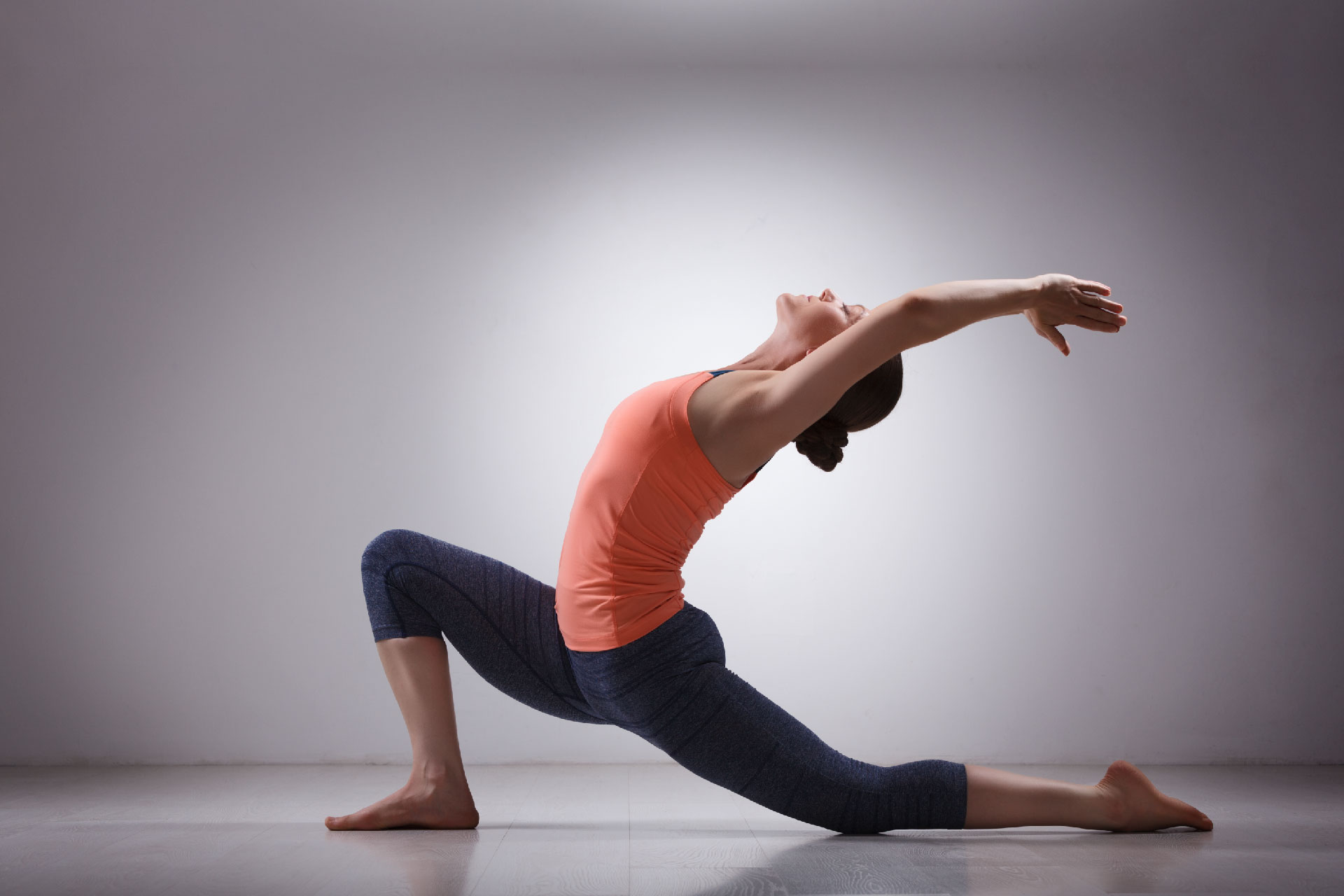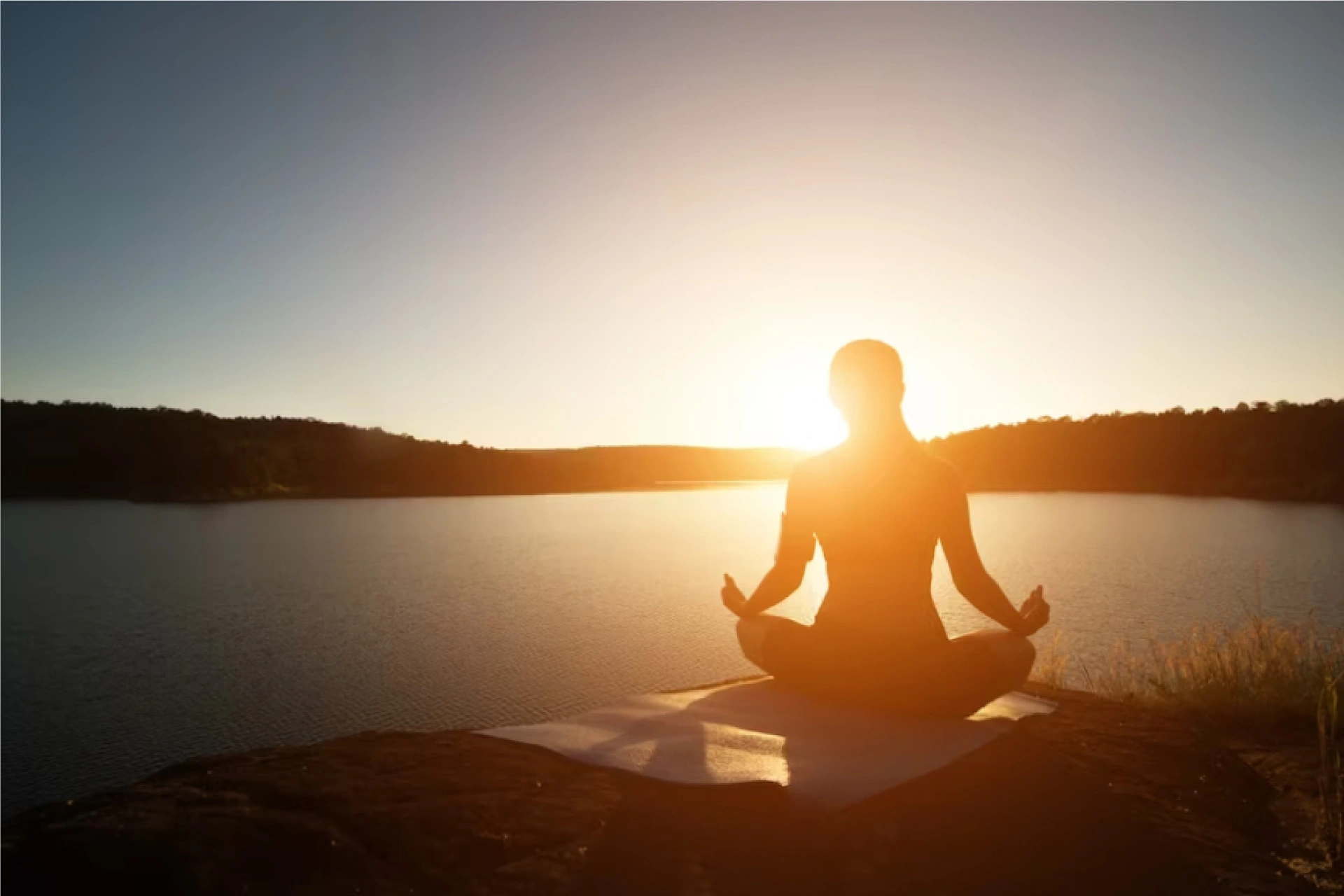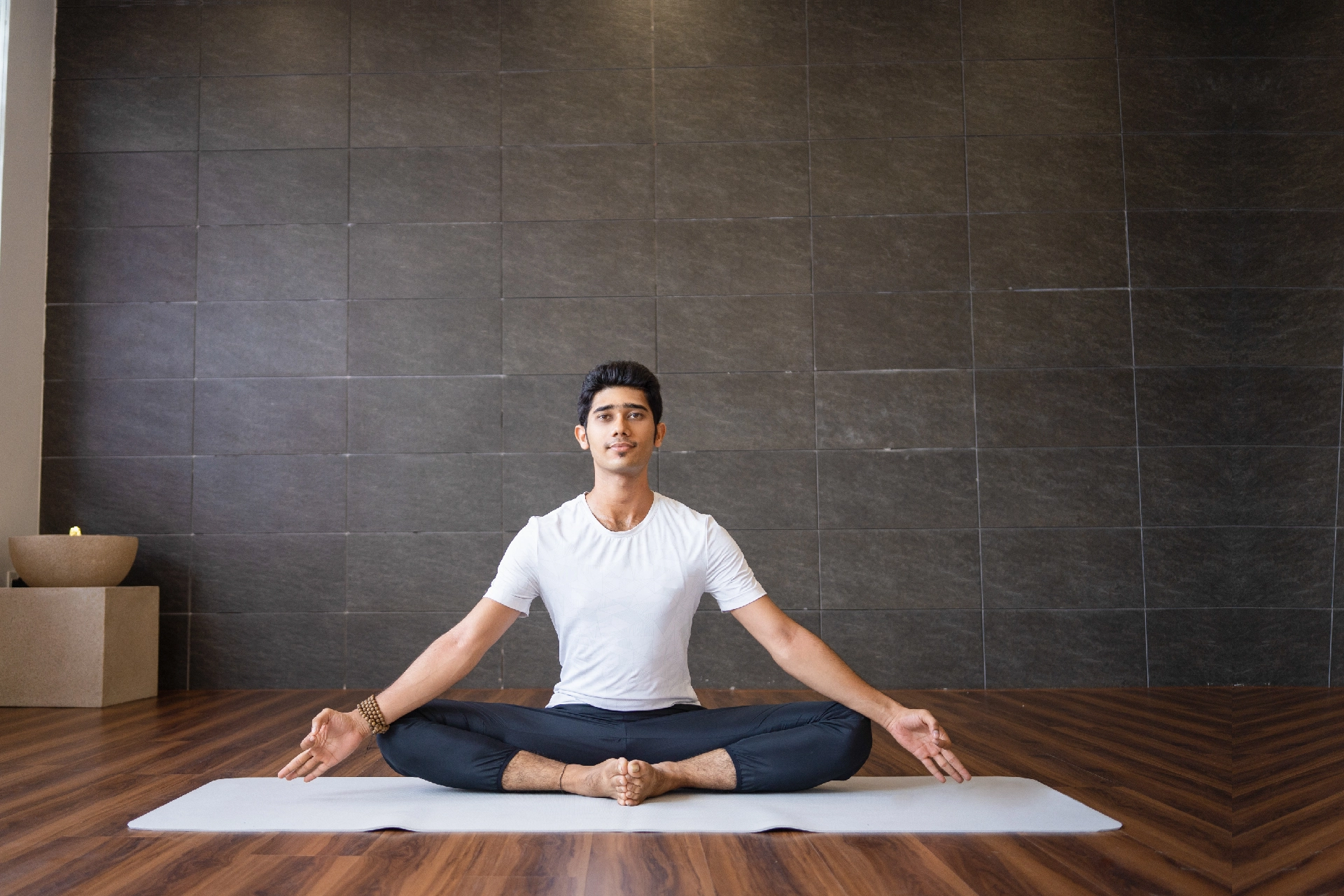Physiotherapist | 8 min read
Vinyasa yoga: Meaning, Types, Benefits, Steps and Precautions
Medically reviewed by
Table of Content
Synopsis
Vinyasa yoga is one of the most popular variations of yoga practiced around the world. It is also known as power yoga, a challenging physical practice adopted by many around the world. The style of Vinyasa yoga is similar to a dance or tai chi, where there is a continuous flow of poses. The transitions and poses of Vinyasa are interlinked with breath, where each pose leads to the next. Vinyasa is a high-energy and dynamic yoga practice that builds strength and flexibility. Vinyasa yoga focuses on holding every pose in a static, steady position to stimulate the cardiovascular system.
Key Takeaways
- Vinyasa yoga is like Ashtanga yoga, with the key difference being the variety in the Vinyasa method
- Vinyasa yoga enhances energy levels, promotes relaxation, and lowers stress levels
- Vinyasa is a fast-paced yoga method requiring good breathing control
What is Vinyasa Yoga?
"Vinyasa" in Sanskrit means arranging something in a unique way. An extension of Ashtanga yoga, Vinyasa yoga is based on sun salutations and specific sequences to warm up the body. Vinyasa yoga style is one in which you match your movements with your breaths, connecting each breath to a movement. Also called Vinyasa flow yoga, it is more dynamic than other yoga styles. It is a moving technique that explores the relationship between the body, breath, and mind. According to the teacher's instructions, you move from one pose to the next in Vinyasa. The transition coordinates with your breathing and is done specifically as you inhale and exhale, giving you the feeling that your breath is moving with the body. Vinyasa yoga helps sync your mind and body by emphasizing breathing patterns.
Types of Vinyasa Yoga
Some of the variations of Vinyasa yoga poses to stretch are:
Ashtanga Vinyasa yoga
Unlike the classic Vinyasa yoga, which incorporates different poses each time, Ashtanga yoga employs only the same poses consistently.
Baptiste Yoga
This variation of Vinyasa yoga has a pre-defined set of postures instead of freestyle ones. This yoga form is practiced in hot rooms with temperatures set to 32 degrees Celsius.
Power Flow Yoga
This form of Vinyasa yoga is practiced with music to relax the mind and body.
The eight main Vinyasa yoga positions are:
- Downward-Facing Dog
- Upward-Facing Dog
- Chair Pose
- Warrior 2
- Side Angle
- Plank
- Side Plank
Additional read: Yoga Poses to Stretch and Strengthen
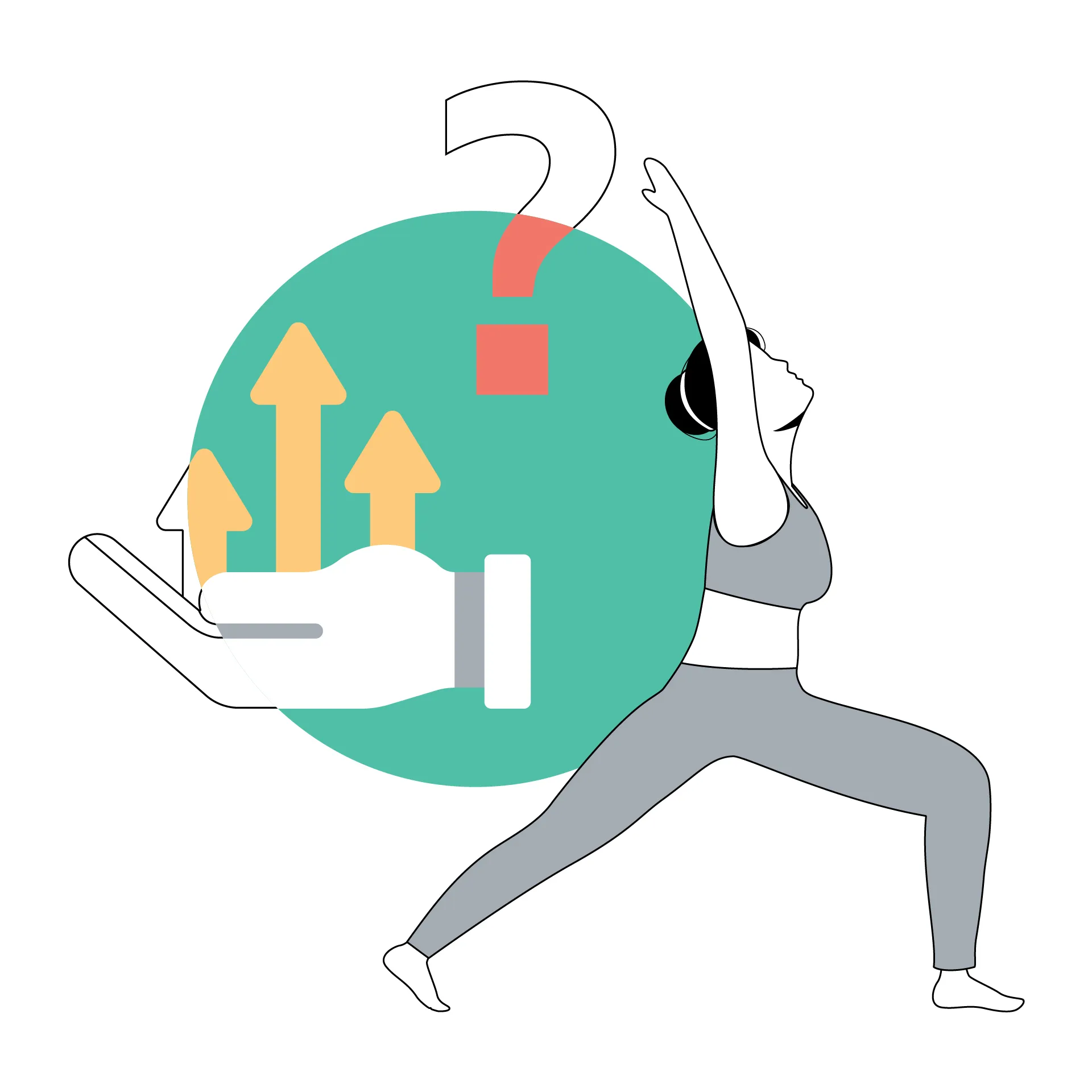
How to Practice Vinyasa Yoga
1. Warm-up
- Begin your yoga with an extended child's pose. Inhale and exhale rhythmically through your nose and relax.
- When you exhale, roll down your tailbone and pull your lower abdomen. Move your chin to your chest and go into a cat pose, arching your back.
- Inhale, drop your belly to the floor, raise your head and look up, coming into the cow pose.
- Return to the neutral pose and exhale to take up the extended puppy pose.
- Lift your elbows, stretch to your fingertips, and open the front part of your chest. Lower your forearms to the ground, bring the navel to the spine, and slide into the sphinx pose.
- After a few breaths, exhale to lower down. Inhale as you slide your hands beside your chest and go into a cobra pose.
2. Foundation
- Exhale to form a cobra pose by coming on all fours, tuck your toes under and go into the downward-facing dog position.
- Bend your knees one at a time, and release your calves and hamstrings. Hold on for five breaths, inhale and move your body to a straight line into a plank pose.
- Exhale, lower your knees, line your hips with the body, lower your front body and keep elbows close to your rib cage.
- Inhale and lift your body into the cobra position
- Exhale and come back to the downward-facing dog position
- This cyclic sequence of downward-facing dog, plank, lowering down, cobra pose, and downward-facing again constitute the basic Vinyasa flow.
- After a few rounds, you can come to a standing forward fold from the downward-facing dog position with your feet width apart and bringing your feet forward.
- Bend your knees and clasp opposite elbows in a ragdoll pose. Tilt from side to side and release the back of your body.
- Inhale, sweep your arms to the side, lift your body and reach your hands over your head with palms touching.
- Exhale and come to the mountain pose.
- Inhale, sweep your arms up, and bend your knees to come to chair pose. Hold, exhale and go into the standing forward fold. Keep your hands near your feet, inhale and go back to the plank pose.
- Adopt the flow to reach the downward-facing dog pose. From here, put your right leg inside your right hand. Lift your heel, press back, and circle your arms up to take the crescent lunge. Then follow the Vinyasa slow and get into the plank pose.
- Repeat the above flow with the left leg
3. Closing
From a downward-facing dog, come to a seated position, roll on your back, and inhale to lift to a bridge pose by lifting your hips. Lower your body after a few seconds, release tension, and relax into savasana.
Additional read: Yoga for High Blood Pressure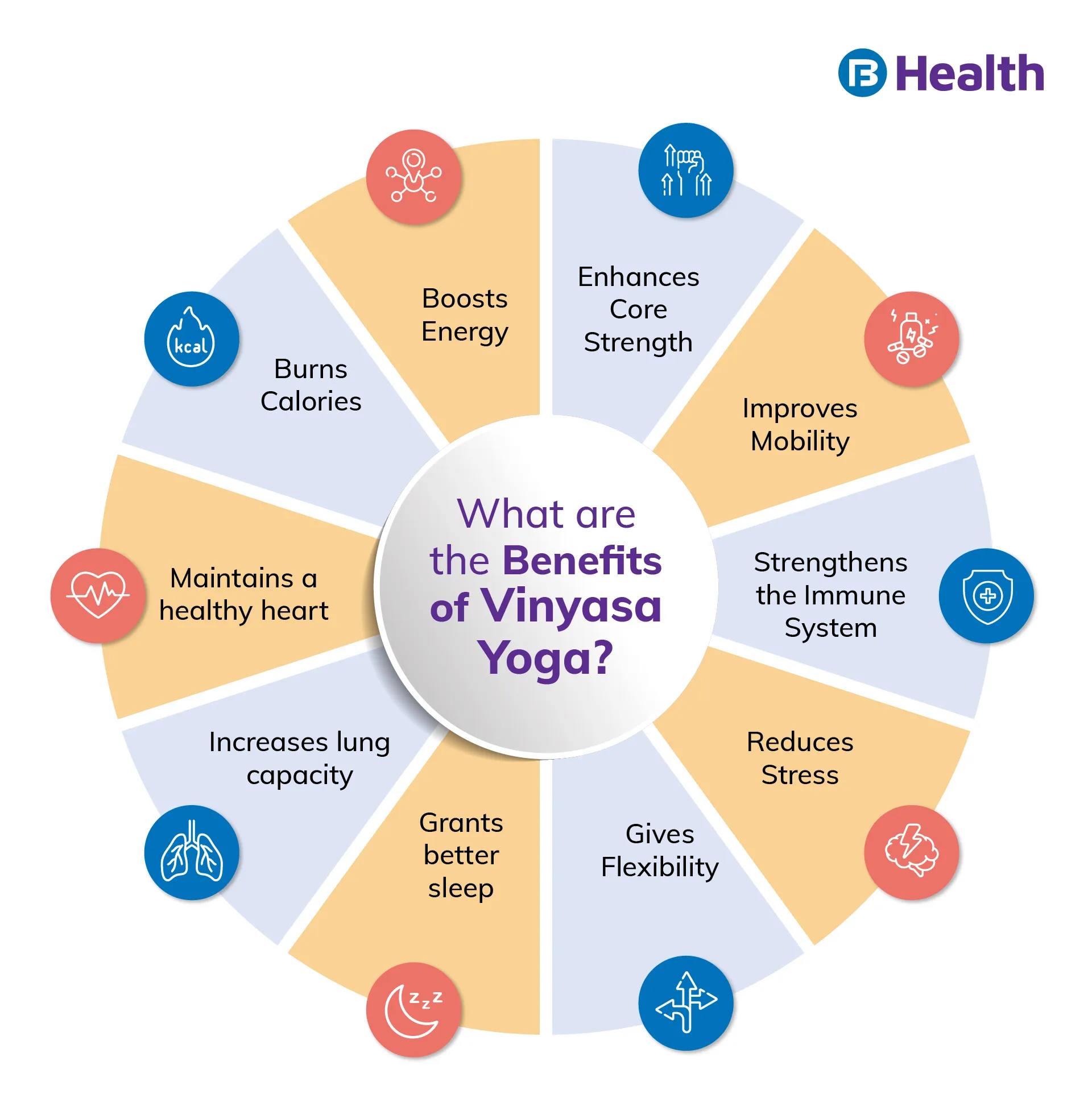
Vinyasa Yoga Benefits
It offers several benefits if practiced on a regular basis. The main Vinyasa yoga benefits are:
Enhances Core Strength
Vinyasa yoga incorporates several poses that can engage and toughen your core muscles. The complex flow of back bends, side bends, and twists can build core strength, power, stability, and balance.
Improves Mobility
A good range of motion is vital to perform your daily activities without injury or strain. The sun salutation and asanas in Vinyasa yoga can enhance your mobility significantly. The muscle strengthening exercises and fast-paced movements give you a range of movements for healthy mobility.
Maintains a healthy heart
It is a low-intensity aerobic physical, cardiovascular exercise. Regular practice of the asanas is essential for maintaining and improving good heart health. The upper back-bending poses can enhance blood circulation to the heart and surrounding muscle tissues.
Reduces Stress
The systematic flow of Vinyasa yoga is considered a "moving meditation." While you move through the sequence of poses, you learn to focus and concentrate, calm your mind, and relieve stress. Vinyasa yoga is ideal for you if you suffer from worry, anxiety, or other stress.
Gives Flexibility
It allows you to use and strengthen every muscle in your body. You can build flexibility and get rid of stiffness in your joints. The stretching done through this yoga form softens the muscles and makes them adaptable to perform any physical activity.
Grants better sleep
The quick movements and mindful breathing techniques in Vinyasa yoga can help you with insomnia. You can fall asleep quicker and catch more hours of quality sleep. The exercise can ease tension in your body and reduce worries which are the primary causes of sleeplessness. But it is not advised to practice Vinyasa yoga right before bedtime as it is a high-flow cardio yoga type.
Increases lung capacity
One of the key benefits you can get from yoga is a strong respiratory system. Vinyasa means "breath-synchronized movement"; hence breathing is a critical component of this yoga form. Deep breathing causes the lungs to expand to the maximum to strengthen the diaphragm. By regularly giving work to your lungs, you can enhance lung capacity and boost lung health, which can help you fight diseases such as asthma or bronchitis.
Burns Calories
During Vinyasa yoga, you constantly move, which can help you burn calories and boost your metabolism. Studies have shown that one hour of Vinyasa yoga practice can help you lose 400 to 600 calories.[1]
Boosts Energy
The practice of pranayama and asanas release endorphins that boost blood flow to the brain and reduce any negative or ruminative thoughts. It is scientifically proven that regular yoga can improve vitality and enhance energy levels. Poor posture is directly linked to low energy, which Vinyasa yoga can help rectify.
Strengthens the Immune System
It is the ideal exercise to strengthen your immunity and remain healthy, especially during the cold and flu season. The range of yoga poses and quick pace can activate your lymphatic organs to increase the infection-fighting white blood cell count and flush out toxins [2]. Apart from stimulating lymph glands, this practice can improve blood circulation, preventing many diseases.
Additional read: Importance of Yoga in Modern Life
Tips For Doing Vinyasa Yoga
- Vinyasa yoga is variable; you can adopt any sequence that works for you. But remember the following tips to achieve a good Vinyasa yoga workout.
- There must be a main posture in the sequence that determines what the other postures will be.
- Each Vinyasa yoga sequence must start with a warm-up.
- The peak posture in your sequence must be powerful enough to strengthen all muscle groups of your body.
- Yoga poses that require you to twist and balance must ideally be incorporated in the middle of the sequence when you have high energy levels.
- You must ideally wrap up your sequence with a forward-fold sequence.
Precautions While Performing Vinyasa Yoga
You must stabilize yourself to avoid injuries during motions so you can easily move seamlessly from one pose to another.
- If you are unable to keep up with the pace of Vinyasa yoga, take a break.
- If you experience chronic pain in your knees, shoulders, neck, or back, do not practice Vinyasa yoga. Get in touch with a General Physician to find out if Vinyasa yoga is right for you.
- It is not advisable for pregnant women unless approved by their physician.
- Vinyasa must not be practiced on a full stomach.
It is the step towards a healthy lifestyle. But you must ensure that you follow all precautions and the sequence under an instructor's guidance. If you have any health issues and are unsure about practicing Vinyasa yoga, you can address your queries through online doctor consultation from Bajaj Finserv. To protect yourself from injuries, you can purchase a reliable health insurance plan from Bajaj Finserv. This plan can protect you from injuries during any accident or illness.
References
- https://timesofindia.indiatimes.com/life-style/health-fitness/fitness/weight-loss-the-number-of-calories-you-burn-by-performing-vinyasa-yoga/photostory/73490232.cms#:~:text=The%20number%20of%20calories%20burned%20while%20performing%20vinyasa,calories%20by%20performing%20vinyasa%20flow%20for%20an%20hour.
- https://www.yogajournal.com/practice/yoga-sequences/yoga-sequence-keep-healthy-winter/
Disclaimer
Please note that this article is solely meant for informational purposes and Bajaj Finserv Health Limited (“BFHL”) does not shoulder any responsibility of the views/advice/information expressed/given by the writer/reviewer/originator. This article should not be considered as a substitute for any medical advice, diagnosis or treatment. Always consult with your trusted physician/qualified healthcare professional to evaluate your medical condition. The above article has been reviewed by a qualified doctor and BFHL is not responsible for any damages for any information or services provided by any third party.
